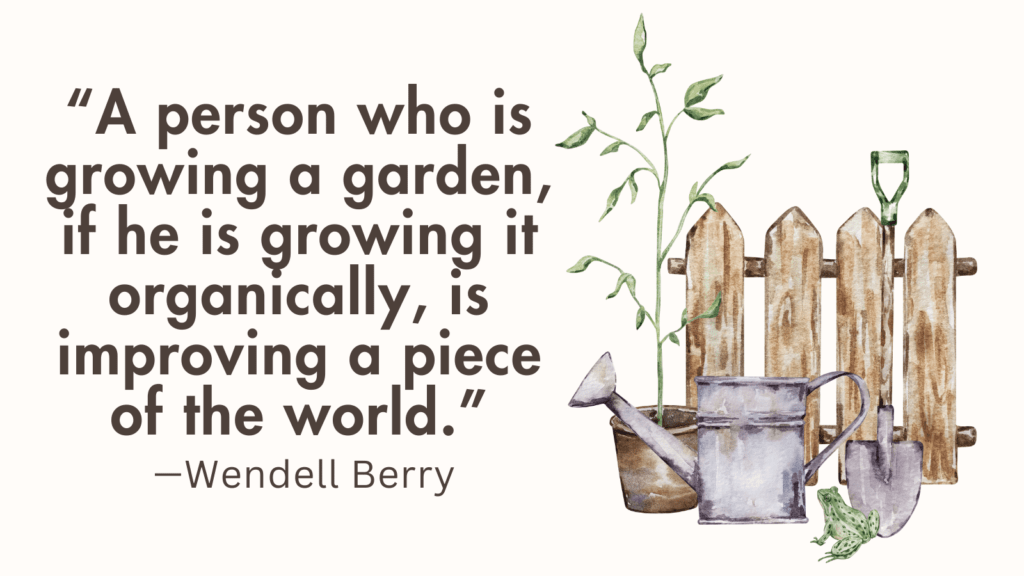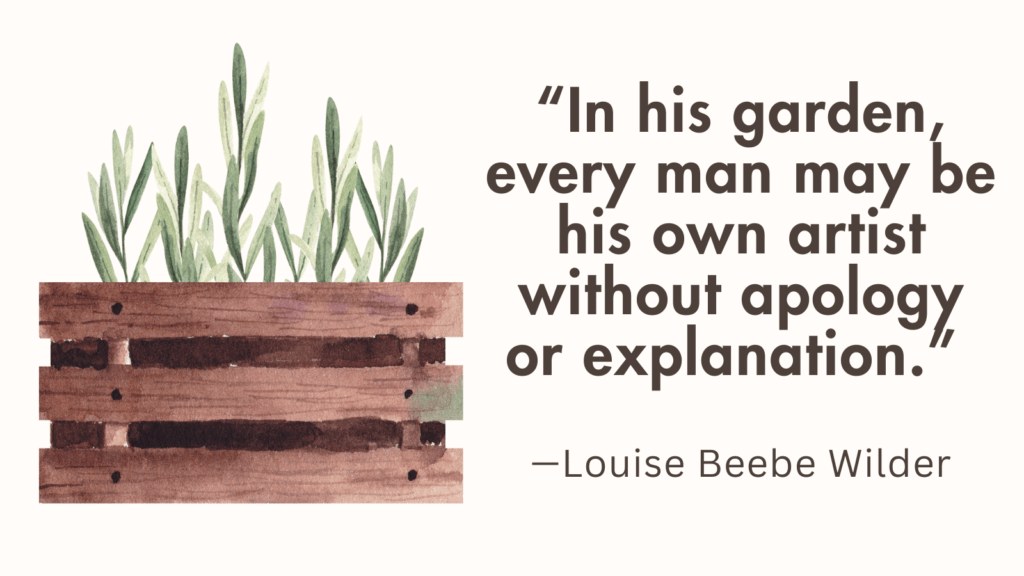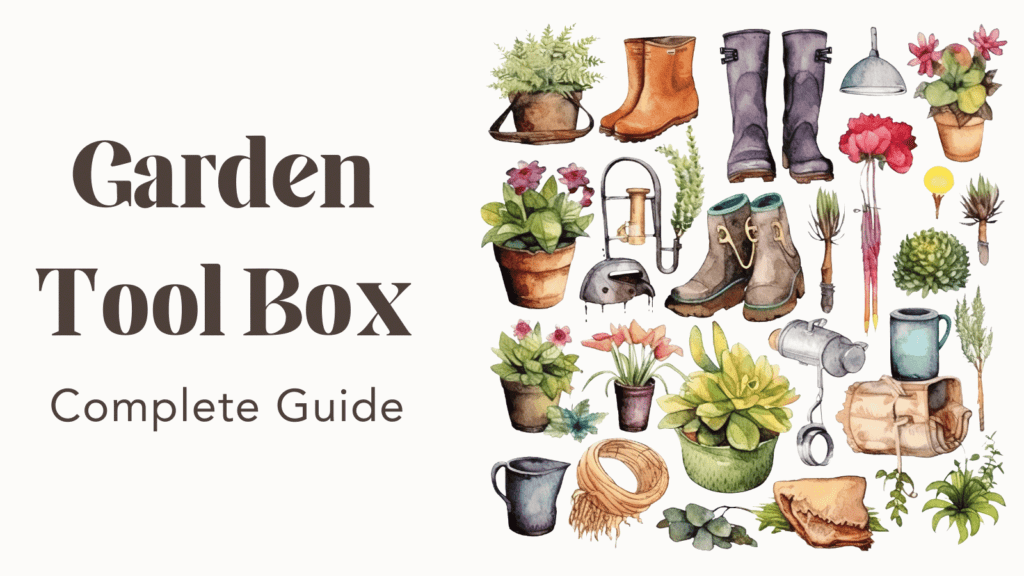In this post, you’re going to learn how to put slate in a garden.
Slate – A Versatile Material For Garden Design
Slate is a fine-grained, metamorphic rock that is primarily composed of clay minerals and traces of other minerals such as quartz and mica.
One of the distinctive features of slate is its ability to be easily split into thin, flat sheets or layers, making it a popular material for roofing tiles, flooring, and other construction purposes.
The color of slate can vary, ranging from dark gray and black to green, red, purple, and even blue, depending on the mineral content and impurities present.
Slate is a versatile material that can be used in various ways to enhance your garden design.
Different Ways to Use Slate In Garden?
Here are some ideas on how to incorporate slate into your garden:
1. Pathways and stepping stones
Create elegant and durable pathways by laying slate tiles or using irregularly shaped pieces as stepping stones.
Slate’s natural texture and color variations add visual interest to your garden while providing a practical and slip-resistant surface.
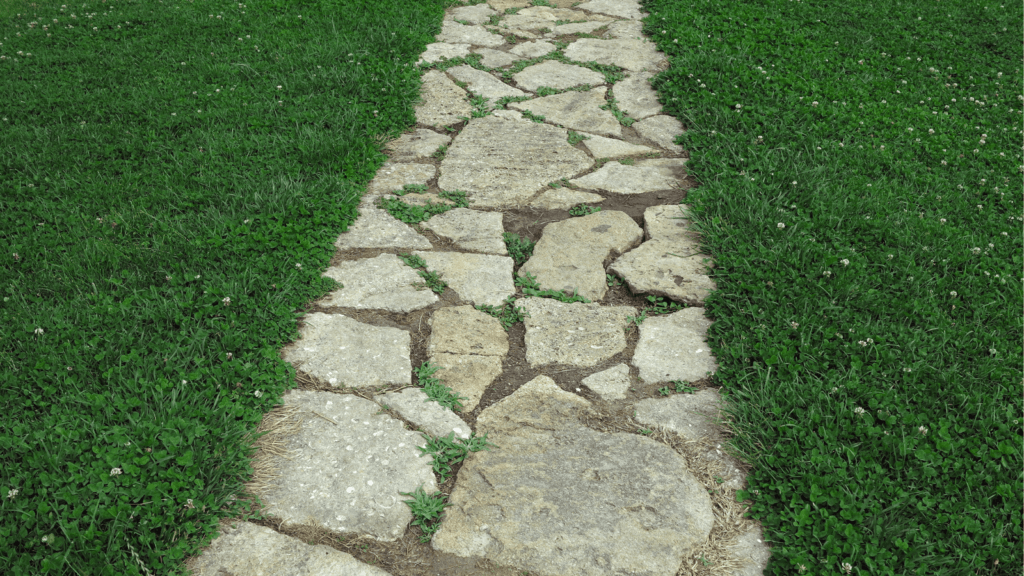
2. Patio or seating area
Build a stylish and functional outdoor patio or seating area using large slate pavers.
This not only adds a modern touch to your garden but also creates an inviting space for relaxation and entertainment.
3. Retaining walls
Construct attractive and long-lasting retaining walls using slate stones.
The varying thicknesses and shapes of slate can be used to create a unique and eye-catching pattern, adding visual appeal to your garden while serving a practical purpose.
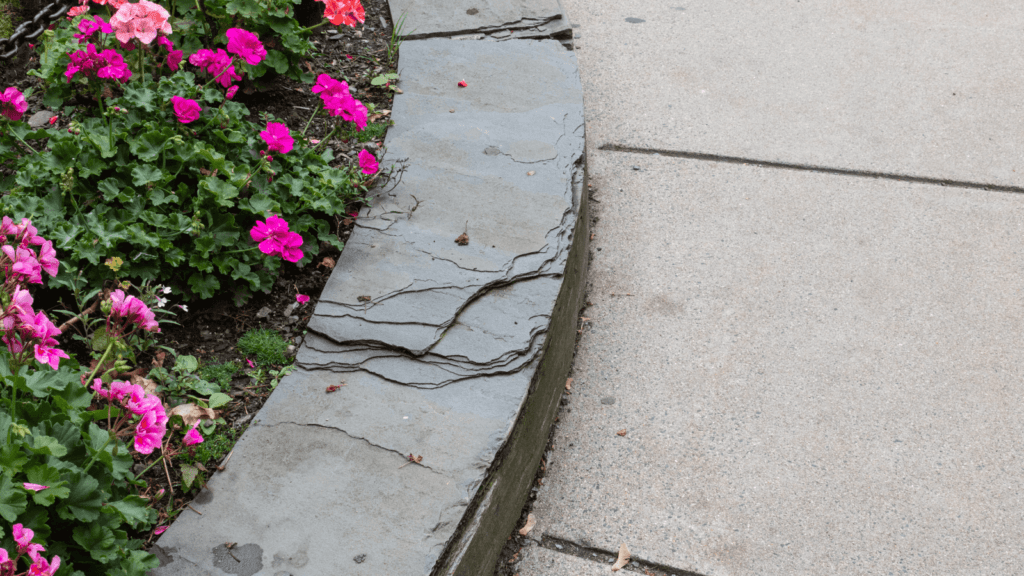
4. Garden edging
Use thin slate strips or tiles to create edging along flower beds, pathways, or borders.
This helps define and separate different garden areas, giving a neat and organized look to your landscape.
5. Water features
Incorporate slate into water features such as fountains, ponds, or waterfalls.
The natural hues and textures of slate blend beautifully with the flowing water, creating a tranquil and mesmerizing focal point in your garden.
6. Plant markers or labels
Make decorative plant markers or labels by engraving or painting on slate tiles.
These can be placed near plants or herbs to identify and add a charming touch to your garden.
7. Vertical gardens or green walls
Install slate panels or tiles vertically to create a stunning green wall.
Attach planters or hang potted plants to the slate surface, allowing for a unique and space-saving way to showcase your favorite plants.
8. Decorative accents
Use slate as decorative elements like ornamental boulders, sculptures, or even as a backdrop for outdoor artwork.
The natural beauty and earthy colors of slate add an elegant and timeless aesthetic to your garden.
Remember to consider the overall design theme and style of your garden when incorporating slate.
It works well with both contemporary and rustic garden designs, and its versatility allows you to unleash your creativity while adding a touch of sophistication to your outdoor space.
Related: Do Rabbits Eat Mint In The Garden?
How To Put Slate In A Garden?
To put slate in your garden, follow these steps:
1. Decide on the area
Determine where you want to place the slate in your garden.
It could be a pathway, a patio, or a decorative element.
2. Prepare the soil
Clear the area of any debris, weeds, or grass. Level the ground using a rake or shovel.
If necessary, remove any large rocks or roots that may interfere with the installation.
3. Measure and mark
Measure the dimensions of the area where you plan to install the slate.
Use stakes and string to mark the boundaries and ensure straight lines.
4. Lay the base
For proper drainage and stability, it’s recommended to lay a base layer of crushed stone or gravel.
This will help prevent weeds from growing and stabilize the slate.
Spread and compact the base evenly using a tamper or a hand compactor.
5. Add a weed barrier
To further prevent weed growth, lay a geotextile or weed barrier over the compacted base.
This will help keep the slate surface free from unwanted plants.
Related: Why Do You Plant Rosemary By Your Garden Gate?
6. Place the slate
Start by laying the larger pieces of slate first.
Arrange them according to your desired pattern, leaving equal gaps between each stone for jointing material.
Use a level to ensure that the slate is even and at the desired height.
7. Cut the slate
If needed, use a wet saw or tile cutter to trim the slate to fit along the edges or around obstacles.
Follow the manufacturer’s instructions for proper usage and safety precautions.
8. Fill the gaps
Once the slate is in place, fill the gaps between the stones with fine gravel, sand, or a specialized jointing material.
This helps stabilize the slate and creates a finished look.
Use a broom or brush to sweep the material into the gaps and remove any excess.
9. Compact and level
Use a plate compactor or hand compactor to gently compact the slate and jointing material.
This ensures that everything is securely in place and provides a smooth, even surface.
10. Clean and maintain
After installation, clean the slate surface with water and a mild detergent to remove any dirt or debris.
Regularly sweep the area to prevent the buildup of leaves or other organic matter that can stain or damage the slate.
Remember to check local building codes or regulations before installing slate in your garden.
Additionally, you may consult with professionals or resources specific to your area for guidance on materials and techniques suitable for your climate and soil conditions.
Related: How To Build A Garden Window?
Garden Slate vs. Granite vs. limestone
In terms of comparison to other types of stone, here are some key points about garden slate, granite, and limestone:
1. Garden slate
It is known for its natural beauty and comes in various colors, textures, and shapes.
Slate is durable and suitable for outdoor use but may be more prone to cracking under extreme heat.
Its water absorption is relatively low, and it can withstand freeze-thaw cycles if properly installed.
2. Granite
Granite is a highly durable stone with a wide range of colors and patterns.
It is heat-resistant and can withstand extreme temperatures.
However, granite may have higher water absorption levels compared to slate, so sealing may be required.
It is also suitable for outdoor use and can withstand freeze-thaw cycles.
3. Limestone
Limestone is a sedimentary rock that offers a more classical and elegant look.
It is generally softer than slate or granite and may require more care and maintenance.
Limestone has moderate water absorption, and some varieties are susceptible to damage from freeze-thaw cycles unless specially treated.
FAQ
How do I choose the right size of garden slate for my project?
Firstly, think about the intended purpose of the slate.
If you are using it for a pathway, smaller or medium-sized slates may be more suitable.
For larger areas like patios or seating areas, larger slates can create a more dramatic effect.
Additionally, consider the overall dimensions of your outdoor space and the scale of other elements within it.
You want to ensure that the size of the slate complements the surrounding landscape and architectural features.
Is garden slate slippery when wet?
In general, garden slate is not inherently slippery when wet.
However, individual characteristics of the slate, such as its texture, composition, or surface treatment, can affect its slip resistance.
Some varieties of garden slate may have a naturally textured surface, which can provide better traction even when wet.
Additionally, certain types of sealants or finishes can be applied to the slate to further enhance slip resistance.
It is always advisable to consult with the supplier or manufacturer to ensure you select a suitable type of slate for areas that may get wet, such as pool decks or near water features, to prioritize safety.
Does garden slate require any special maintenance?
Garden slate requires minimal maintenance but still benefits from regular care to keep it looking its best.
Generally, routine maintenance involves sweeping away debris, occasional washing with mild soap and water, and resealing if necessary.
How long does garden slate typically last?
The lifespan of garden slate can vary depending on several factors, including the quality of the stone, the climate, and how well it is maintained.
However, when properly installed and cared for, garden slate has the potential to last for many decades.
It is considered a durable material that withstands outdoor conditions well.
Can garden slate be used around water features?
Yes, garden slate can be used around water features. Its natural properties make it suitable for such applications.
It can be used to create stunning pathways, patios, or even as decorative elements around fountains, ponds, or other water features.
However, since water may increase the risk of slipperiness, it’s essential to choose an appropriate type of slate and ensure proper installation techniques to maintain safety.
Is garden slate resistant to fading in sunlight?
Garden slate is generally resistant to fading in sunlight.
Most varieties of slate are naturally weather-resistant and retain their color over time.
However, it’s worth noting that prolonged exposure to intense sunlight or extreme weather conditions can cause some slight color changes or fading over an extended period.
If maintaining the original color is a priority, you can consider sealing the slate or choosing varieties specifically labeled as fade-resistant.
Does garden slate retain heat?
Garden slate, like most natural stone materials, has the ability to retain heat.
This can be an advantage in cooler climates as it can absorb and radiate warmth, making it comfortable to walk on even in colder weather.
However, in hotter climates or during summertime, slate may become hot to the touch, so it’s advisable to take precautions such as wearing shoes when walking on it.
Does garden slate attract or repel insects?
Garden slate is not known to attract insects. It does not provide a food source or harbor favorable conditions for pests.
Therefore, it is generally considered to repel insects rather than attract them.
However, it’s important to note that insects may still be present in the surrounding garden or soil, so regular gardening practices should be followed to control any potential insect issues.
Does garden slate affect soil pH?
Garden slate typically has a neutral pH, which means it does not significantly affect the pH of the surrounding soil.
This makes it a versatile material that can be used in various garden settings without causing significant changes in the soil chemistry.
However, if you have specific concerns about soil pH, it’s always a good idea to test your soil and consult with a local gardening expert.
How do I clean garden slate?
Cleaning garden slate is relatively simple.
Start by removing any loose debris or dirt using a broom, brush, or leaf blower.
For more thorough cleaning, you can use a mild detergent or soap mixed with water and a soft-bristle brush.
Avoid using harsh chemicals or abrasive cleaners that may damage the slate’s surface.
Rinse the slate thoroughly with clean water, and allow it to air dry.
Regular maintenance of sweeping and occasional washing will help keep your garden slate looking its best.
Can garden slate be used in outdoor fire pits or fireplaces?
Garden slate can be used in outdoor fire pits or fireplaces, but it’s important to keep in mind that slate is a natural stone and may crack or break under extreme heat.
It’s recommended to use fire-resistant materials or fire bricks as the inner lining of the fire pit or fireplace to provide a layer of protection for the slate.
Does garden slate absorb water?
Garden slate generally has low water absorption properties, meaning it does not readily soak up water.
This is advantageous in outdoor settings as it helps prevent water damage or staining.
However, it’s still essential to ensure proper drainage around the slate to avoid any standing water that could potentially seep into cracks or joints.
How much does garden slate typically cost?
The cost of garden slate can vary depending on several factors, including the quality of the slate, thickness, size, and region.
On average, garden slate can range from $8 to $20 per square foot.
It’s always recommended to check with local suppliers or retailers for accurate pricing information.
Can garden slate withstand freeze-thaw cycles?
Garden slate is generally known for its durability and ability to withstand freeze-thaw cycles.
However, it’s essential to choose a high-quality slate that has been properly quarried and treated to ensure it can withstand the stresses caused by freezing and thawing.
It’s also important to follow proper installation techniques, including adequate base preparation and appropriate joint spacing, to minimize any potential damage caused by freeze-thaw cycles.
Where can I purchase garden slate?
You can purchase garden slate from various sources, including home improvement stores, landscaping suppliers, or stone yards.
Online retailers and specialized stone suppliers are also other options to explore. It’s recommended to research local suppliers in your area to find the best selection and prices.
Related: Garden Tool Box [Complete Guide + Resources]

Garden Cart
*As an Amazon Associate I earn from qualifying purchases, at zero cost to you, if you click through the link and finalize a purchase.

